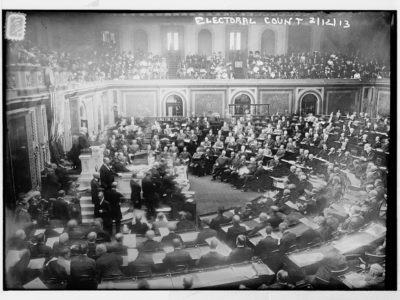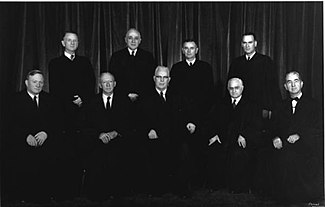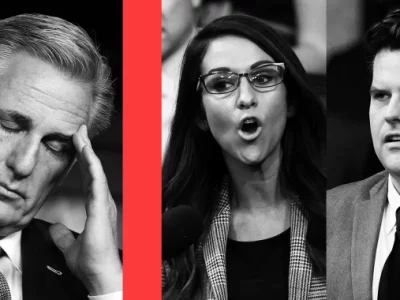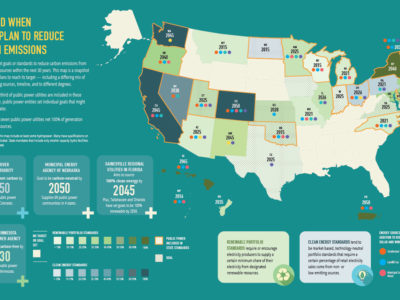Parks and Housing Together: A Win for Communities and the Environment
A new Pritzker Environmental Policy Brief discusses the benefits of parks and affordable housing joint development
Los Angeles needs more parks and more affordable housing. When compared to other major cities across the country, the City of L.A. ranks 78th out of 100 in terms of park access, acreage, amenities, investments, and equitable distribution. More than 1.4 million people in the City of L.A. and nearly five million people in Los Angeles County experience park poverty. The City and County are also struggling to provide stable affordable housing for individuals and families who...
CONTINUE READINGDoes Ideology Kill?
Interpreting the association between conservatism and COVID death rates.
There is mounting evidence of an association between conservative politics and COVID impacts. Indeed, the higher death rate among Republicans may even have swung some close elections. A recent study sheds light on how ideology and death rates interact. As the Washington Post reports, the results were striking: “Covid death rates were 11 percent higher in states with Republican-controlled governments and 26 percent higher in areas where voters lean conservative. Simil...
CONTINUE READINGPlutocracy Comes Home To Roost
Gavin Newsom Abandons His Climate Commitments To Favor His Billionaire Contributors
Well, well, well, what a surprise: not. Last year, when he single-handedly defeated Proposition 30 but falsely claiming it was a handout to Lyft, Gavin Newsom claimed it was unnecessary because of the state's investments in clean energy. This was also false, since under its own estimates, the state would be nearly 1 million chargers short of necessary for adequate EV infrastructure. And now, Newsom has decided in his budget proposal to institute "trigger cuts" to ...
CONTINUE READINGSingle Subject = Single Stupidity
New House Rule Designed To Cause Dysfunction
The House Rules package passed last night is potentially a disaster: it seems specifically created to make it impossible for the federal government to pay its debts, although there are (second-best) ways around it that President Biden will undoubtedly use. One provision, though, seems common-sensical: each bill must have a "single subject." No more massive omnibus bills throwing in the kitchen sink. It appears like it just enhances transparency. It piggybacks on 4...
CONTINUE READINGLearning to Name Environmental Problems
It was only in the 1960s that the Supreme Court learned to talk about “pollution” and “wilderness.”
There are Supreme Court cases going back a century or more dealing with what we would now consider environmental issues such as preserving nature or air pollution. But when did the Court start seeing filthy rivers and smokey cities as embodiments of the same problem, despite their striking physical differences? And when it did start thinking of "wilderness" as a good thing rather than a failure to use available resources? It was only once that shift was made that ...
CONTINUE READINGA Taste of Things to Come
Welcome to 2023. It’s going to be a wild ride.
In the past week, we’ve gotten a glimpse of what the next two years will look like. On the one hand, chaos in Congress. On the other hand, quiet progress toward environmental goals by the Biden Administration. Both trends are likely to continue throughout this Congress and the second half of the presidential term. The chaos is common knowledge. Much as Netanyahu’s desperate quest to become prime minister led to unprecedented power for a small band extreme right-...
CONTINUE READINGAdvances in State Climate Policy
Despite the distractions of a national election, there were important developments around the country.
Last year, Congress took its first big step into climate policy by passing blockbuster spending measures. Nonetheless, many states are ahead of the Feds in climate policy. There were important developments in a multitude of states. California remained a hotspot for climate action. In terms of transportation emissions, the California Air Resources Board (CARB) approved regulations banning the sale of new gas and diesel vehicles by 2035. The law contains important m...
CONTINUE READINGLA’s Big Step toward Building Electrification
Los Angeles is about to require that new buildings be electric, but there’s a bigger decarbonization hurdle waiting.
The City of Los Angeles is going into the new year with a big new building-decarbonization ordinance: starting this year, nearly all new buildings in the city will have to be entirely electric. This means that, with few exceptions, new buildings will need to exclusively use electric appliances, and will not be allowed to contain any fossil-fuel infrastructure, like natural-gas lines. All-electric as the new normal The new rules are simple: after April 1 (June 1 for...
CONTINUE READINGThe Year Ahead
Here are the top ten environment and energy developments to watch for.
Here we are, starting another year. Last year turned out to have some major environmental developments. The most notable were the Supreme Court’s ruling in West Virginia case, striking down the Clean Power Plan, and the passage of the Inflation Reduction Act, with its huge economic incentives for clean energy. Here’s quick rundown of what 2023 might hold in store. The Sackett case. A ruling in this case, now back in the Supreme Court a second time, could...
CONTINUE READINGA New Birth of Housing?
Omnibus' "Baby YIMBY" Bill Offers An Opportunity For Cities -- And For Advocates
Tucked deep inside the massive Omnibus bill is what has been called the "Baby YIMBY" provision -- an $85 million grant program, to be administered by HUD: The bill provides the U.S. Secretary for Housing and Urban Development (HUD) with $85 million to dole out on a competitive basis to jurisdictions for "the identification and removal of barriers to affordable housing production and preservation." The secretary, currently Marcia Fudge, would have wide discretion to s...
CONTINUE READING













